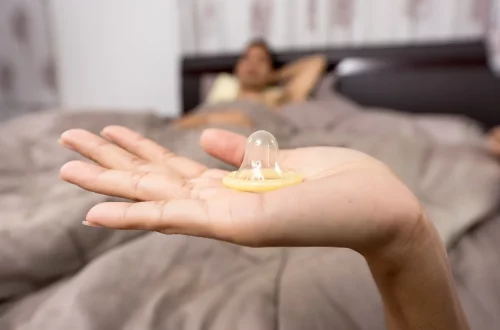
The Ultimate Guide to Choosing and Using Facial Hair Dye
Facial hair has become an essential part of many men’s grooming routines, serving as a canvas for personal expression and style. As trends evolve, so does the desirability of colored facial hair, whether for aesthetic purposes or simply to cover gray hairs. The process of dyeing facial hair, however, can be a nuanced task that requires careful consideration of various factors, including skin sensitivity, the type of dye used, and the desired outcome.
Choosing the right facial hair dye not only enhances your appearance but also ensures that you maintain healthy skin underneath. Many individuals might be apprehensive about the potential damage that dyes could cause, especially given the sensitive nature of facial skin. Understanding the ingredients, application techniques, and upkeep will empower you to make informed choices and achieve results that align with your style.
This guide aims to shed light on the important aspects of selecting and using facial hair dye, helping you navigate the choices available in the market. With the right knowledge, you can confidently embrace your unique look and enjoy the benefits that come with it.
Understanding Facial Hair Dyes: Types and Formulations
When considering facial hair dye, the first step is to understand the various types and formulations available. There are primarily two categories of dyes: permanent and semi-permanent.
Permanent dyes penetrate deeper into the hair shaft, providing longer-lasting color that can withstand multiple washes. These dyes often contain ammonia or peroxide, which help to open the hair cuticle and allow the color to bond effectively. While they offer durability, they can also be harsher on both the hair and the skin. For those with sensitive skin or those looking for a less drastic change, semi-permanent dyes are a gentler alternative. They coat the hair rather than penetrate it, usually lasting around four to six weeks. These dyes typically do not contain ammonia, making them less damaging.
Another consideration is the formulation of the dye. Many brands now offer natural or organic options that use plant-based ingredients, reducing the risk of allergic reactions or skin irritation. These formulations are often free from harsh chemicals and are more suitable for those with sensitive skin or allergies.
Before selecting a dye, it’s crucial to evaluate your skin type and any sensitivities you may have. Conducting a patch test is always recommended, even with products labeled as “gentle” or “natural.” Apply a small amount of the dye to an inconspicuous area and wait 48 hours to check for any adverse reactions.
Choosing the right shade is equally important. Facial hair tends to be coarser and may absorb color differently than scalp hair. Thus, it’s advisable to select a shade that closely matches your natural hair color or one that is just a shade darker. This approach will create a more natural look and minimize the risk of an overly dramatic change.
Step-by-Step Guide to Dyeing Facial Hair
Once you’ve selected the right dye, the next step is to follow a methodical approach to application. Preparing for the dyeing process is crucial for achieving the desired results while minimizing potential mishaps.
Begin by gathering all necessary supplies, including gloves, an applicator brush, a mixing bowl, and a towel to protect your clothing. It’s also wise to wear an old shirt or an apron, as dye can stain fabrics.
Start by cleaning your facial hair thoroughly to remove any products or oils that may prevent the dye from adhering properly. A mild cleanser will suffice. After rinsing, pat your facial hair dry with a towel.
Next, apply a thin layer of petroleum jelly or a barrier cream around the edges of your facial hair. This will help prevent the dye from staining your skin.
Following the manufacturer’s instructions, mix the dye in a bowl. Using an applicator brush, begin applying the dye to your facial hair, starting from the roots and working your way to the tips. Ensure that every strand is evenly coated for a consistent color.
Once the dye is applied, set a timer according to the recommended processing time. Avoid leaving the dye on for longer than suggested, as this can lead to unwanted results or irritation.
After the time is up, rinse your facial hair thoroughly with lukewarm water until the water runs clear. Avoid using shampoo immediately after dyeing, as this can strip the color. Instead, use a gentle conditioner to help soften the hair and maintain moisture.
Finally, pat your facial hair dry and style it as usual. It’s advisable to wait at least 24 hours before washing your face or applying any other products to allow the dye to set properly.
Maintenance Tips for Colored Facial Hair
To keep your colored facial hair looking fresh and vibrant, proper maintenance is key. This involves both routine care and specific products tailored for colored hair.
First, consider the frequency of washing. Over-washing can lead to faster color fading. Use a sulfate-free shampoo designed for color-treated hair, as sulfates can strip the dye. Aim to wash your facial hair no more than two to three times a week.
Incorporating conditioning treatments into your routine will significantly benefit your facial hair. Look for conditioners specifically formulated for colored hair, as they help to lock in moisture and maintain the vibrancy of the dye. Deep conditioning treatments once a week can also restore hydration and softness.
Protecting your facial hair from environmental factors is essential. UV rays can cause color to fade, so when spending time outdoors, consider using a leave-in conditioner that contains UV protection. Additionally, avoid excessive heat styling, which can further damage the hair and cause color loss.
When it’s time to touch up your color, pay attention to the areas that may fade faster, such as the sides or the underbeard. Depending on the dye used, touch-ups may be needed every four to six weeks. Always follow the same application steps as the initial dyeing process to ensure even results.
Lastly, if you notice any irritation or adverse reactions after dyeing, discontinue use immediately and consult a dermatologist. Your skin’s health should always be a priority.
Common Mistakes to Avoid When Dyeing Facial Hair
Dyeing facial hair can seem straightforward, but several common pitfalls can lead to disappointing results or unwanted side effects. Being aware of these mistakes can help you achieve a flawless finish.
One of the most frequent errors is neglecting to perform a patch test. Even if you’ve previously used a dye, formulations can change, and your skin’s sensitivities may vary over time. Always conduct a patch test to avoid potential allergic reactions.
Another mistake is not following the instructions provided with the dye product. Each brand may have specific guidelines regarding application, processing time, and post-care. Skipping these details can lead to uneven color or irritation.
Using the wrong tools can also impact your results. Always use an applicator brush rather than your fingers to apply dye, as this ensures better control and reduces the risk of staining your skin. Additionally, avoid using metal bowls for mixing, as some dyes may react with metal.
Furthermore, failing to protect your skin during the dyeing process is a common oversight. Applying a barrier cream around the facial hair can save you from unsightly stains that may require extensive scrubbing to remove.
Lastly, many people underestimate the importance of aftercare. Skipping conditioning treatments or using harsh shampoos can strip your color and dry out your facial hair. Make sure to incorporate gentle, color-safe products into your grooming routine for the best results.
In conclusion, dyeing facial hair can be an enjoyable and transformative experience when approached with the right knowledge and care. By understanding the types of dyes available, following proper application techniques, and maintaining your color, you can confidently enjoy a stylish look that reflects your personality.
**Disclaimer:** This article is for informational purposes only and should not be considered medical advice. For any health-related concerns, please consult a qualified healthcare professional.




